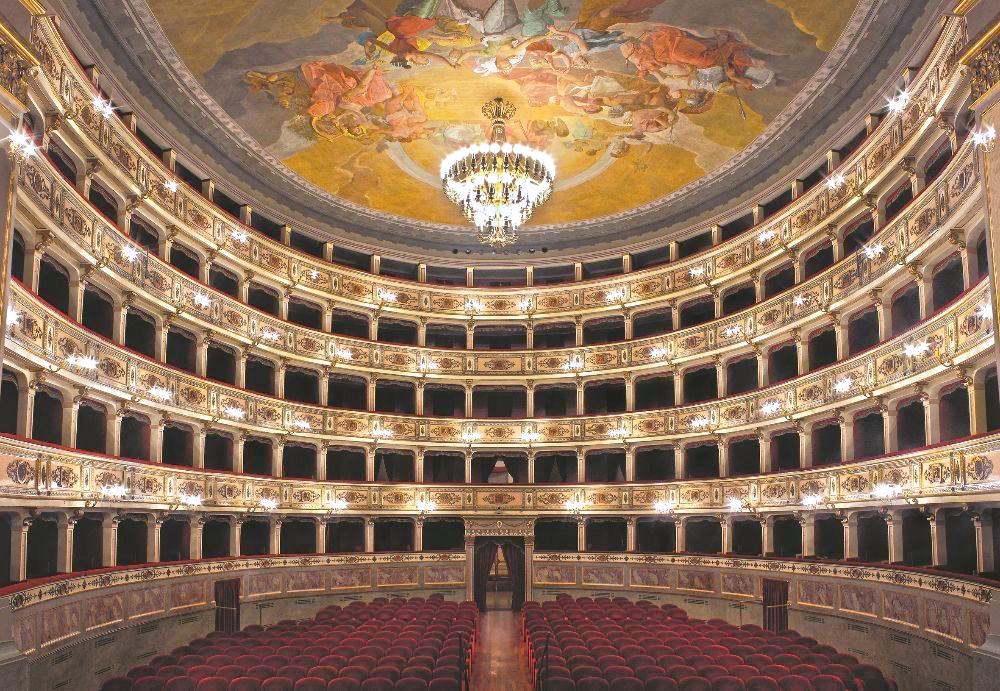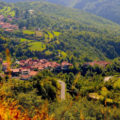The Province of Fermo is located in the Le Marche region of central Italy. It spreads from the Adriatic coast to the Sibillini Mountains in the west. It is bordered in the north by Macerata and to south it is separated from the province of Ascoli Piceno by the Aso River. The eastern border has some of the highest peaks in Le Marche, the highest being Priora at 7,700 feet. It is also extremely hilly, with only a narrow band of flat land running along the coast.
Fermo is one of the newest Italian provinces. Established by decree in 2004, five years later, its governance became operational. The administrative center and provincial capital is the city of Fermo, which only has a population of 38,000. The total population of the province is roughly 175,000, spread among its 40 towns and 333 square miles. Although the province is new, the history of the area stretches back many centuries.
The town of Fermo dates back to the 11th century BC, when it was established by the Villanovan people. This was at the earliest stages of what was to become the Etruscan civilization. The Villanovans introduced iron-working to the Italian peninsula and Fermo was one of the centers of the culture.
In ancient times it was called Firmum Picenum and became a Latin military colony of the Picentes. Manned by an army of 6,000 in 264 BC, they struck a truce with Rome and the colony became a Roman stronghold for the next six centuries. The Firman soldiers were highly respected for their faithfulness to Rome and for their military skills. After the fall of the Roman Empire and a dark period of invasions, in 825 AD, Lothair I, King of Italy and later Holy Roman Emperor, established the first public school in Italy in Fermo and made it the capital of the Marchia Fermana, extending from the Musone River to the Pescara River. In 1199, Fermo became a free city, but it was often at war with neighboring villages where Lords were always prepared to extend their fiefdoms. Fermo remained independent until 1550, when it was annexed to the Papal States.
Fermo is located on a hill less than three miles to the west of the Adriatic Sea and provides a wonderful panorama of the surrounding countryside and the River Tenna. Underneath the town is an intricate system of well-preserved Roman cisterns dating back to the first century AD. They were built to conserve and purify the water for the people of the town and are considered to be one of the finest examples in Italy. These cisterns are located underneath Via Paccarone near Chiesa di San Domenico.
The Cathedral of Santa Maria Assunta was built in 1227 by architect Giorgio da Como on the site of a numerous earlier churches. The Cathedral is a mixture of Romanesque and Gothic styles. The facade, which is a national monument, has a wonderful rose window carved in 1348 by Giacomo Palmieri. To the left is a massive bell tower with four levels of windows. Inside is an early Christian mosaic and the Altar of the Holy Crucifix, surrounded by four wooden statues representing the virtues prudence, justice, fortitude and temperance. Through a stairway it is possible to descend underground, where the traces of the previous three churches can be seen. Over 400 archaeological items are preserved there, dating from Picenian to the medieval times.
There are many beautiful buildings lining the Piazza del Popolo, including the Biblioteca Comunale which contains some of the important historical documentation of the region. The square is the hub of the town with many bars and restaurants. You will also find markets during the spring, summer and fall and it is the scene of the town’s numerous festivals. The piazza’s most famous building is the Palazzo dei Priori, built in the late 13th century by merging a number of previous buildings (which explains its irregular roof outline). It was completed in its present form during the Renaissance. A double stairway leads to the central entrance. Above the doorway is a bronze statue of Pope Sistus V, the work of Jacopo Sansovino.
The Palace, now a museum, has a rich collection of paintings, including several masterpieces such as the “Histories of Saint Lucy” by Jacobello del Fiore. Also of interest is the Sala del Mappamondo, created in 1688 by Cardinal Decio Azzolino. It is a huge library that preserves 1,250 precious volumes belonging to royal physician Romolo Speziali and an imposing globe with a diameter of six feet, made in 1713 by geographer Abate Moroncelli of Venice.
The Teatro dell’Aquila, built between 1780 and 1790, is among the largest and most prestigious theatrical centers in the region, seating 870 people. The chandelier is made from wrought iron and gilded wood, while the frescoed ceiling is painted with mythological scenes.
The Musei Scientifici is hosted within Villa Vitali, a splendid mansion built outside the city walls by the Vitali family in the early 19th century. The Villa hosts the Silvio Zavatti Ethnographic Polar Museum, preserving items from Zavatti’s explorations in the Arctic, the Tommaso Salvadori Ornithological Museum, a private collection of stuffed birds, several of which are extremely rare and the Sala della Meteorite, where a meteorite fell in the countryside of Fermo can be seen.
Dotted around the beautiful countryside of the province are many small towns and villages that hold intrigue and history of their own. The village of Falerone was once a center of some importance and is believed to have been founded as a colony by Caesar Augustus. A large portion of a first century BC theater is the oldest feature of the village. The town of Montefalcone Appennino lies roughly 22 miles west of Fermo. The medieval town contains the tower of an ancient castle as well as two 14th century churches. Montegranaro is actually better known for its footwear. It is one of the main centers in Italy for the production of shoes.
Monterubbiano is a pretty historic hilltop town two miles south of Fermo. Its castle walls date back to 1443 and can be entered by two ancient entrance gates, Porta del Pero and Porta San Basso. There is also a 14th century palazzo built in Romanesque-Gothic style, as well as an archaeological museum.
Nearby is one of the feudal villages that was often at war with Fermo – Moresco. Today it maintains its distinct medieval character and has a population of only 600. One of Italy’s loveliest villages, it is immediately recognizable by its 12th century, 82-foot-tall, seven-sided tower. From the top of the tower on a clear day you can see Mount Conero to the east and the Gran Sasso Mountains to the west. The large 16th century bell still chimes every day in alternate succession with a clock tower that was built to guard and defend the old entrance to the castle.
Aside from history, along the coast, Porto San Giorgio is a well-known vacation destination. It has a long stretch of golden sand, clear turquoise water with a popular palm tree-lined promenade. The dining is fabulous with a large selection of beachside bars and restaurants that makes a visit to the Province of Fermo not only fascinating, but relaxing as well.





